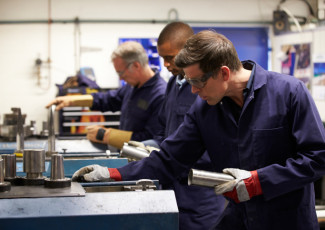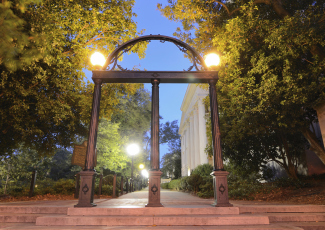A Transfer-Pathway Program in Utah
By Rebecca L. Weber
April 23, 2015
Building on their existing partnerships, Salt Lake Community College and the University of Utah are offering a dual-admissions agreement to help prepare more students for four-year institutions.
Access U, a program between Salt Lake Community College (SLCC) and the University of Utah, guarantees students admission and an annual $2,000 scholarship to the University of Utah after graduating from SLCC. It also offers support services to help keep students on the path toward completion and transfer.
“We got the right people together and moved this forward very quickly,” says SLCC President Deneece Huftalin, who was appointed earlier this year. “That’s pretty powerful. We started talking about this last fall.”
The majority of SLCC graduates transfer to the University of Utah — or as the locals call it, “the U.” SLCC has an established track record of sending high-quality, well-trained students who start off at SLCC because it’s an affordable choice.
But of the seven out of 10 SLCC students who say they intend to complete an associate degree and then transfer to a four-year institution to earn a bachelor’s, only half that number of full-time students transfer within three years. (Data isn’t available over longer periods of time, but missionary work may skew these numbers: Many first-time SLCC students leave campus to do two years of full-time church service, and some of those students eventually return to complete their studies. Part-time students who take longer to complete also are not included.)
Creating pipelines toward completion
The program officially launches this fall and will target two distinct population groups. One is via the Partnership for Accessing College Education (PACE), a scholarship program for high school students. SLCC began working with ninth graders in a single high school four years ago, and now those teens, who have been groomed for SLCC, will receive full scholarships and are expected to follow the path through community college and on to the university.
Each successive high school class at the school also has been offered the chance to become PACE scholars, and two more high schools have come on board. “We are looking at two other schools to join us,” says Huftalin, adding that these schools have many underrepresented students who may not have otherwise accessed college.
The second group is made up of university applicants who were denied admission but were identified as being on the brink of acceptance and could likely become successful students, with a bit of extra academic prep. Those students received letters in mid-March, asking them to participate in the program, and they have until May to decide. A summer orientation for those who opt into the pilot program will help build community.
Building bridges
The bridge program includes access to the U.’s library and rec center, which are physically very close to SLCC and give the chance for an integrated campus experience. “Although they’ll be spending two years with us, they’ll have a full-time experience with them as we try to build that pathway,” says Huftalin. “We’ve had a strong partnership with the U. for a long time. Many of our students transfer there already — this isn’t rocket science.”
Business and community leaders are providing the funds for the scholarships. Huftalin says SLCC had pre-existing relationships with banks and energy companies, but nothing on this scale.
Figuring out how to scale a clear, affordable pipeline may involve strengthening relationships with industry and legislators. This first year is by invitation only, but if all goes well, the aim will be to include more students in the future.
“The challenge for us right now in our thinking is, how do we do this for all students?”
Have you had success partnering with a nearby university? Tell as about it in the Comments below.










